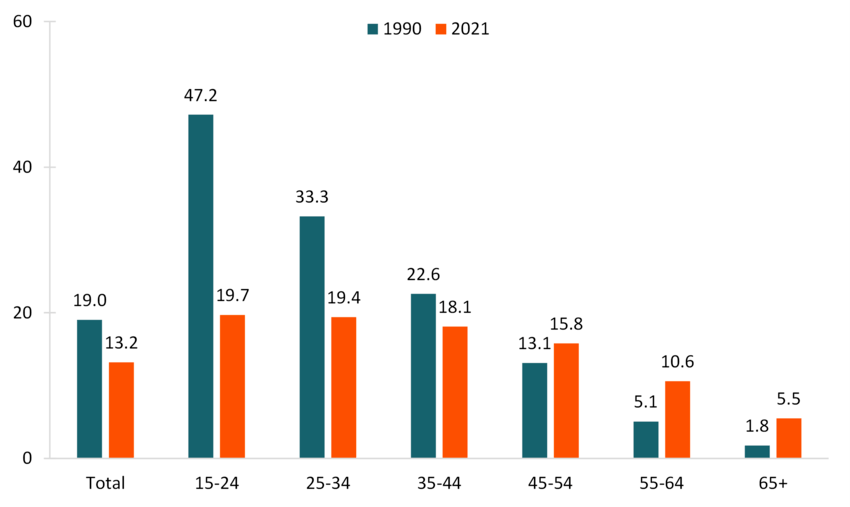Interesting stats here. According to this article, the divorce rate among teen couples has dropped to match that of adults. It's almost as if the Internet and smart phones makes teens mature faster.
2021 divorce rate for 15-25 was 19.7
2021 divorce rate for 25-34 was 19.4
2021 divorce rate for 35-44 was 18.1
Women are now LESS LIKELY to get divorced between 15 and 24 then they are between 25 and 44.
The divorce rate for teenagers is now indistinguishable from that between 30-year olds. Either teenagers are maturing faster, are adults are becoming less mature.
Given that divorce rates dropped, it seems that smart phones and the Internet might be making teens MATURE FASTER.
That is counter-intuitive.

2 comments:
This post is missing a lot of important details.
Admittedly, some of it is simply on the other side of the link. For example, the article linked says that the stats are specifically based on married couple population, so the fact that less people are getting married in 2021 than in 1990 doesn't immediately throw the stats off.
But some of it is in the analysis of the linked article.
For example -- Does the decreasing interest in getting married mean that people who were married in 2021 put more thought into why getting married would be a good idea?
How many people are getting married in the 15-24 cohort, as compared to 1990?
I'm not good at stats -- if the 15-24 cohort is much smaller than the 35-44 cohort, what effect will that have on the divorce rates? I figure it could have wildly varying effects depending on what the people in the cohort are doing (few marriages means small population, so that'd probably amplify whatever actions they take, right?)-- that might be important to address?
And does it matter that the 15-24 bracket bracket is split across "teenager/high school" and "young adult/college"?
If the 15-24 cohort is not shrinking, or is even growing, that would support the theory that the internet, social media, and smartphones are speeding up the maturation process.
(which -- what does it mean, "mature faster," given that, with public schooling and the post ww2 concept of teenagers, 1990s teenagers actually had their maturation process slowed down by the whole "teeangers aren't really adults so let's baby them" thing)
Side note -- because of how aging works, people who were 15 in 1990 would, in 2021, fall into the 45-54 cohort (15+31=46, or at least 15+30=45); and if I did the math right, some of the people who were 24 might even fall into the 55-64 age range (24+31=55) if their birthdays lined up just right.
So would an increase in the 45-54 age cohort indicate that the divorce rates of the 1990 15-24 cohort were inherent to that sub-generation?
Except that the 15-24s of 1990 would only be part of the graph if they got remarried...hm.
Also! How long have people in various age brackets been married?
If the age of marriage has gone up from 1990 to 2021, then older age brackets and younger age brackets may have many members who have been married about as long (eg whether 18 or 38, only married for 3 years). That would affect whether "the honeymoon glow" has worn off; if the marriage length was similar across different age cohorts, that would indicate that it's not the length of the marriage that's determining whether divorce happens.
The maturation process may include the correct self-assessment of whether or not the person, the self, is ready to marry. The fact that the 15-24 range experienced the largest percentage drop - a drop that now essentially matches that of the next two older cohorts - indicates that they are as mature as the next two age cohorts.
As for the rest of your commentary, whatever age machinations you want to apply to the 2021 cohort would also apply to the 1990 cohort, so that's pretty much a wash.
The only significant difference between the two time sets is the number of people marrying. Fewer people marry in 2021, so every cohort seems to be self-selecting as not mature enough to marry. But, the self-selection in the 15-24 cohort is now as accurate as that in the two cohorts that follow, which never used to be the case.
Post a Comment